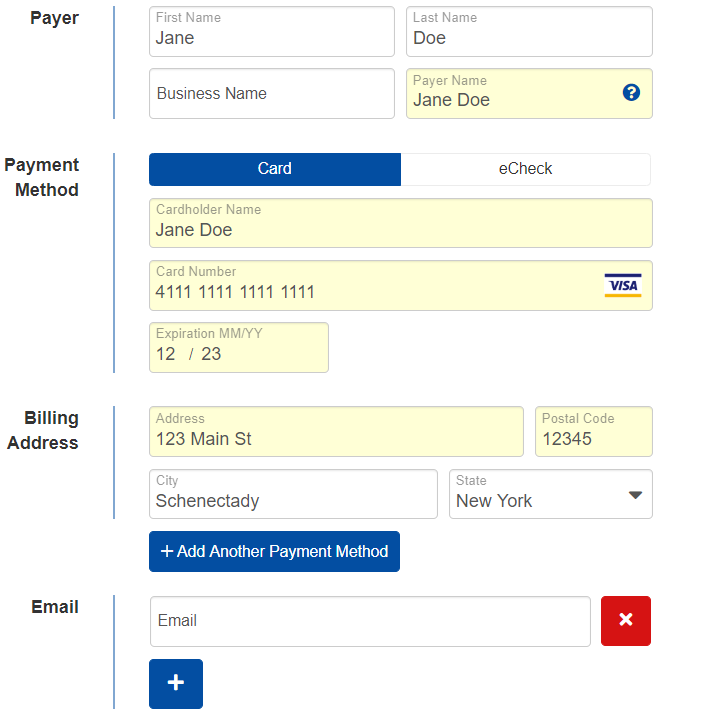Leverage Saved Payment Methods During Onboarding
The Scenario
As a part of their new client onboarding process, a firm prefers to keep a valid payment method on file for easier future retainer and invoice payments.
The Solution
- Firm is creating client in partner system as part of new client onboarding process. Final step is to gather payment information. Partner app calls Clientpay's Payer Page endpoint, gets back a URL and sends that URL to the payer via email.
- Client receives email, opens URL, and enters payer and payment method data into the ClientPay page. (See first screenshot below)
- Upon submission of the form, ClientPay will post back to the partner system with a payerId. That payer ID gets stored by the partner system along with that particular client.
- In time, an invoice is generated against that client within the partner’s software. Partner app calls one of ClientPay's payment page endpoints and includes the payer ID passed back in step 3 as well as relevant invoice data.
- Payment page loads with invoice data and payment method information already stored and ready to be used without reentry. This page can be either completed by the firm user or sent to the payer. (See second screenshot below)
Pros and Cons
Pros | Cons |
|---|---|
The firm minimizes its PCI scope since the payer is entering their credit card data directly into a ClientPay form. | Partner will need to store and maintain payer/payment method IDs for each client. |
Ability to securely store a saved payment method in ClientPay means subsequent payment acceptance is made even easier. | |
Saved payment methods can be leveraged throughout ClientPay, not just via API. |
Sample Pages
A sample payer page, collecting one or more payment methods at onboarding:

A sample (subsequent) payment page that leverages the previously stored payer:
Updated 7 months ago
